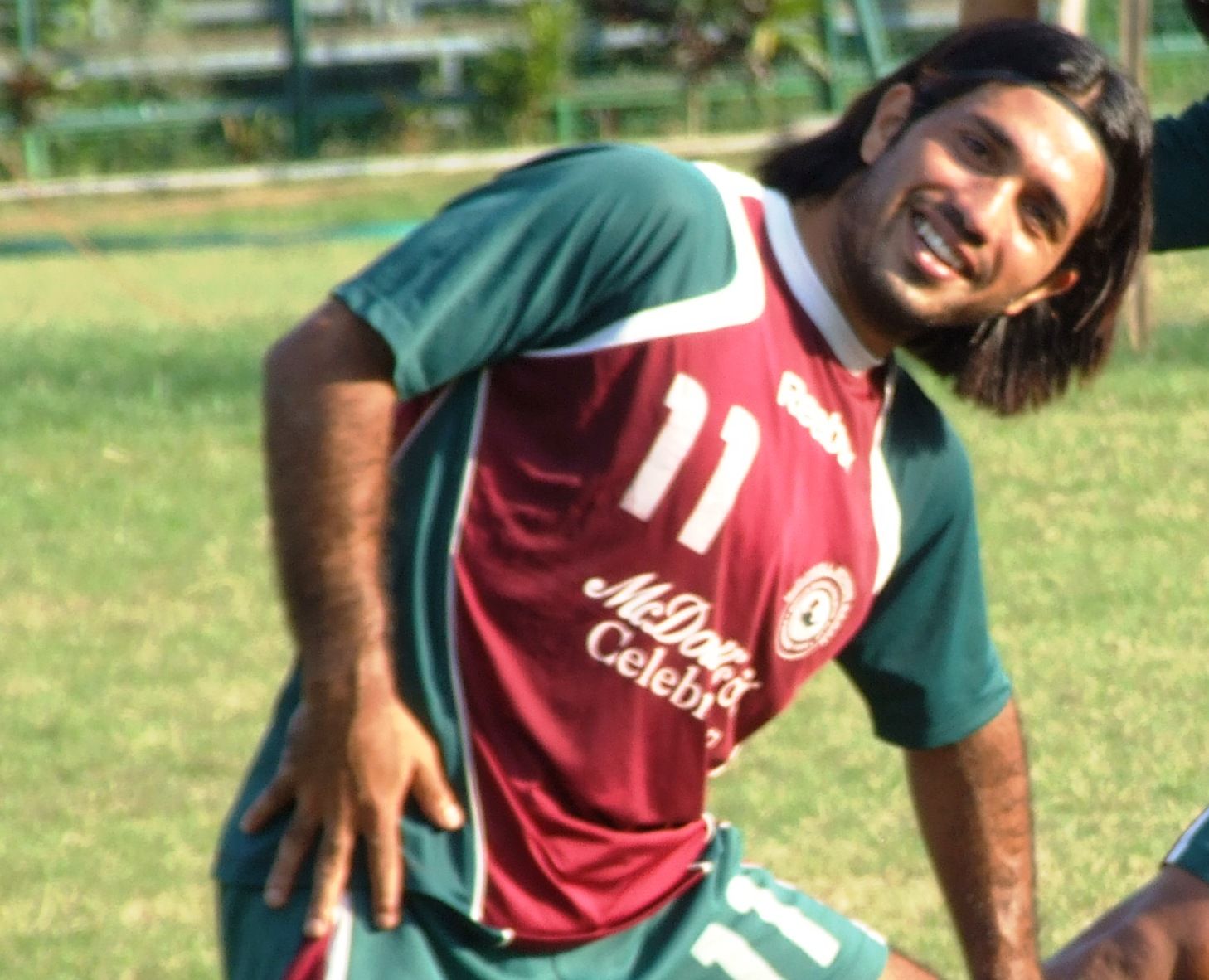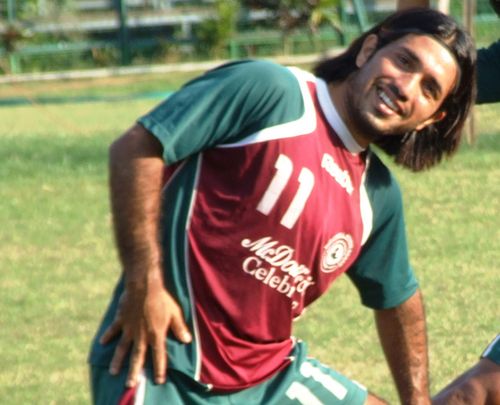
Face of Kashmir football : Ishfaq and Wadoo

After the initial struggle when playing football was as difficult as finding peace in the Kashmir Valley, East Bengal’s Ishfaq Ahmed finally established himself as the much sought after player from the state.
I first met him during the Santosh Trophy in 2008 in Srinagar. In one particular match when J&K played Services, a hard tackle on Ahmed was met with flying bricks and wooden planks from the crowd. I immediately came to the conclusion that the tough midfielder is a star in his own way in the Valley.
That was evident when, during our conversation, a Kashmiri youth gave him a hug. The fan was probably thrilled after watching him score with a powerful header against Services. “Waria aasal (excellent),” exclaimed another fan as the Ahmed left the crowded Bakshi Stadium in Srinagar.
During his decade long career, Ahmed has donned the colours of Dempo (2003-07), Mohun Bagan (2007-11), Salgaocar (2011-12) and, this season he will be wearing red and the gold. But it was his state-mate Abdul Majeed, who was the first footballer to represent Bagan and India in the mid-80s.
“There is a big difference between playing in Calcutta and Goa. As a footballer, you will always want to play in front of a huge audience. If you play well, you will be appreciated. Whereas in Goa, hardly anybody comes to watch matches and you end up playing infront of the empty stadium,” he said.
Despite being a successful player with top Indian clubs, a national call is yet to come for Ishfaq. But he hasn’t lost hope and makes a determined effort to keep pushng hard.
After turning out for Dempo from 2003 to 2006, Ahmed got a call from Mohun Bagan in 2007 and spent four impressive seasons.
So, what’s the difference between East Bengal and Bagan?
“For a footballer, playing for Bagan is always a dream. I was thrilled to be a part of this great club. Also, I think a player must play in Kolkata to be able to learn the nuances of the game.”
Without going into the good, bad and ugly about the two legendary clubs, Ahmed came up with a diplomatic reply which I’m sure will keep their fans happy.
Despite producing some good, quality footballers, Kashmir was not always considered as a feeder state like Hyderabad of the 50s, 60s and Manipur.
Perhaps, the growing insurgency has taken away some players who could have made the grade. In such a scenario, playing and carrying the passion to this level, one must appreciate Ahmed’s steely resolve to succeed. Today, he and Mehrajuddin Wadoo are lucky enough to carry on and establish themselves as successful footballers.
Besides, they are being widely recognised in the Indian football market. Karim Bencharifa liked Ahmed’s tenacity and when the Moroccan was with Bagan. After Bencharifa left Bagan, he carried Ahmed with him to Salgaocar, with whom he became an I-League Champion.
If not for the militancy, Kashmir would have produced many more footballers. During my 15-day stay in Srinagar, I came in contact with some talented young footballers who play for the J&K Bank. Some even play in HAL and ITI in Bangalore where both Wadoo and Ahmed started their career before moving to Goa.
There are lot of institutional teams which play in the local state league which, however, is run shabbily.
But the biggest problem for Kashmiri footballers is the dominance of these institutional teams. Due to technical limitations, players are not allowed to participate in big tournaments and hence exposure at the national level becomes less because they only play in Kashmir.
Somehow, both Wadoo and Ahmed became trendsetters as they broke away from local clubs and went to look for greener pastures.
Also, like any other sports associations, politics rule the roost in J&K as a result of which the game hasn’t progressed beyond the expected level.
Even Ahmed agreed that unless the state government takes initiative to build an infrastructure and take interest in football, the game won’t come up in the Valley which has just one football ground – Bakshi Stadium.